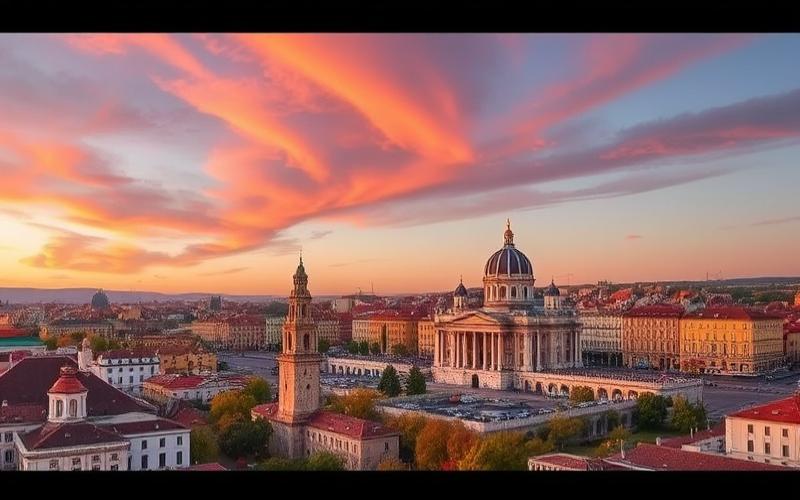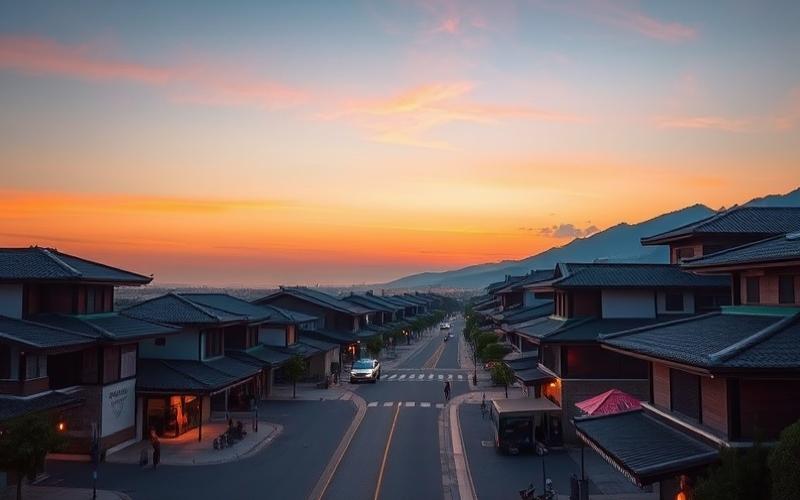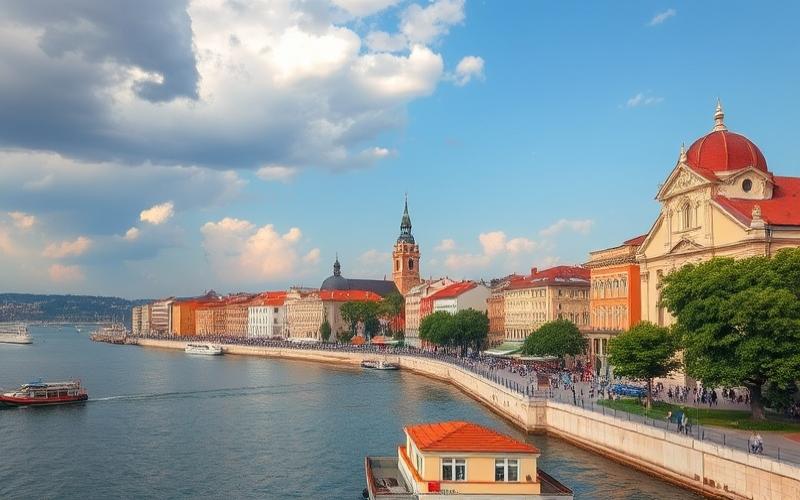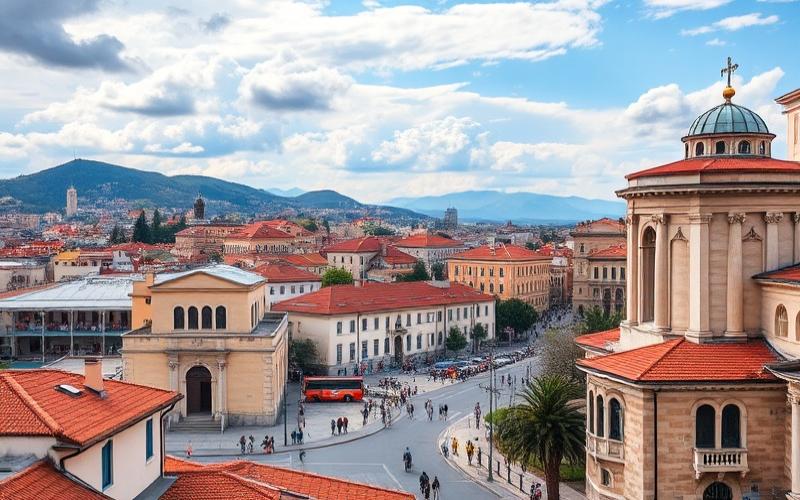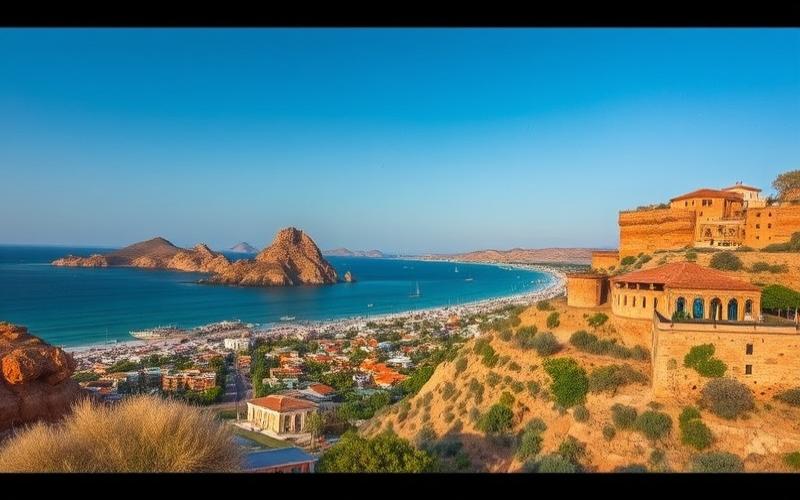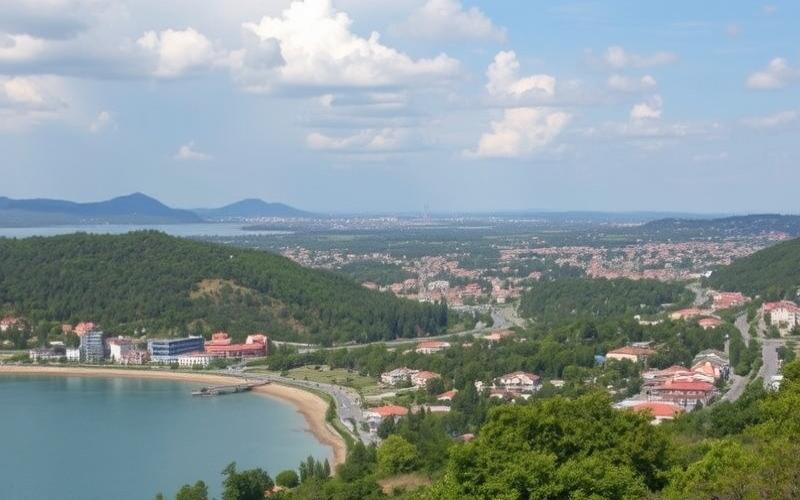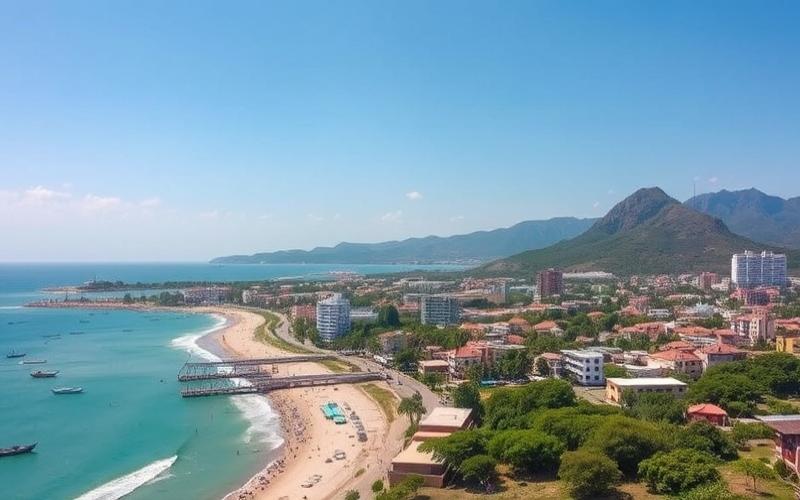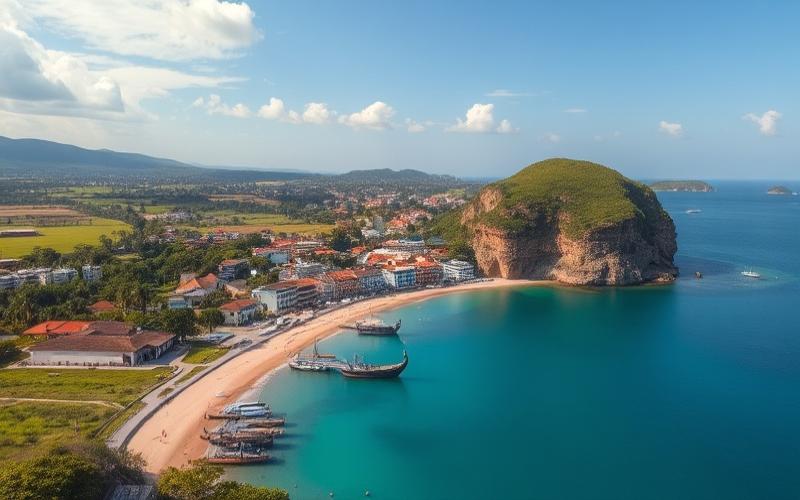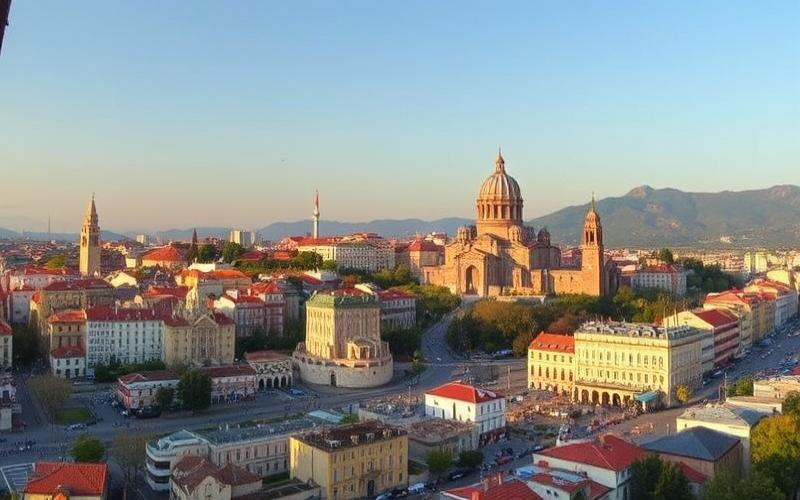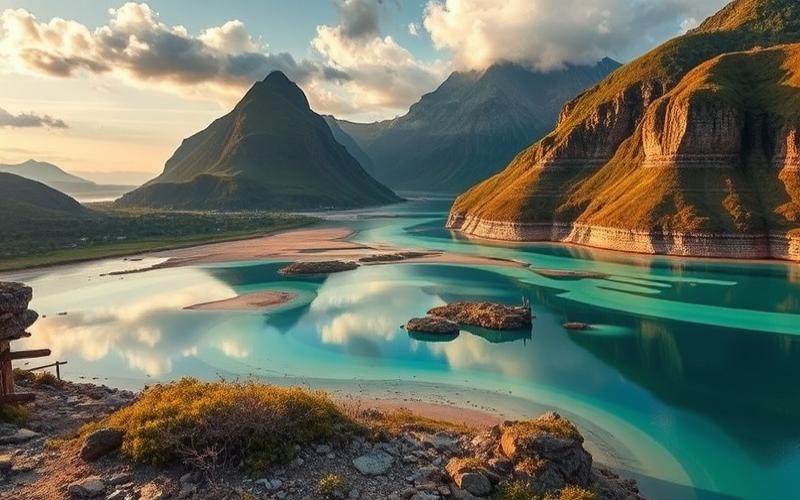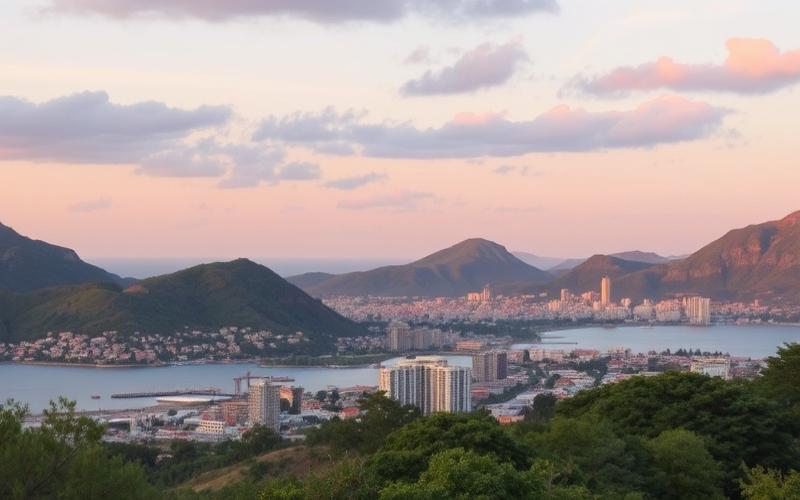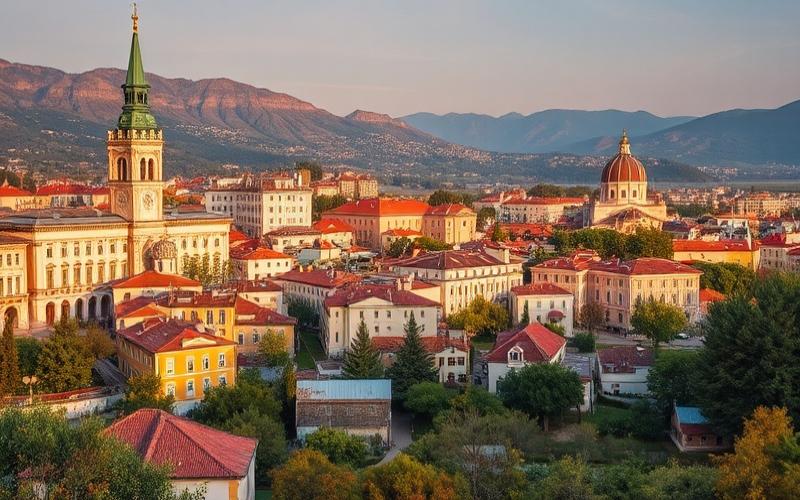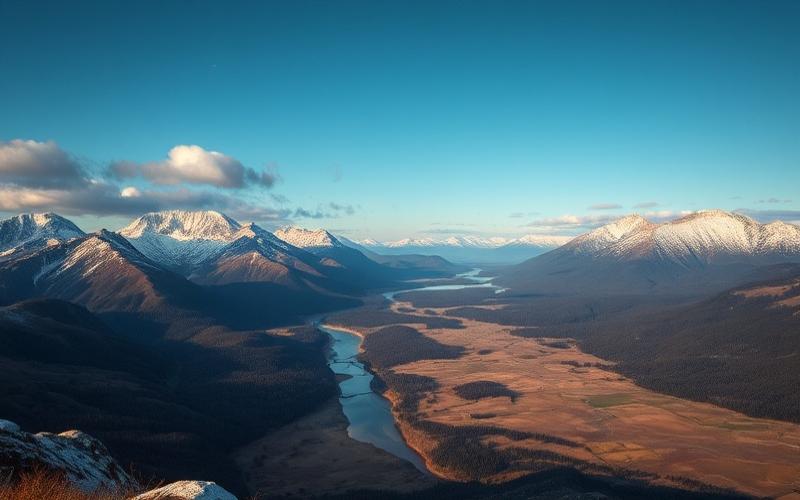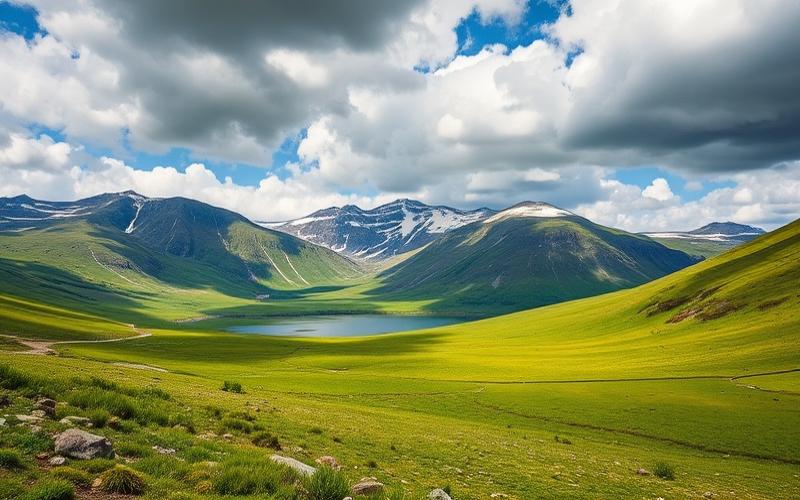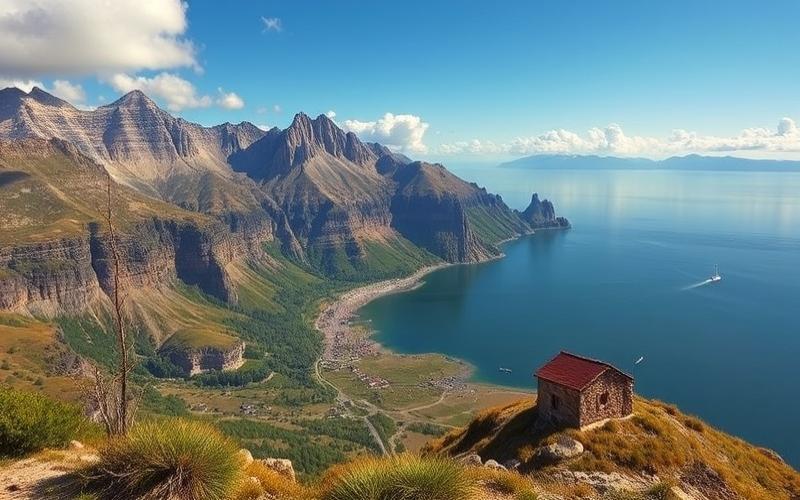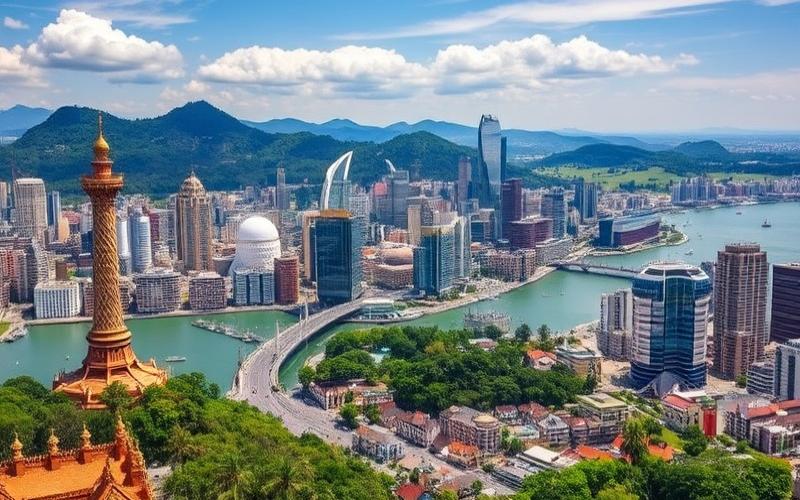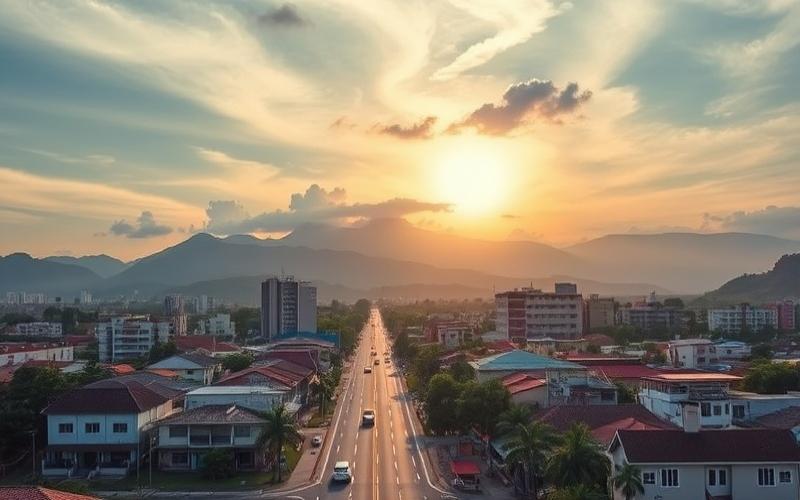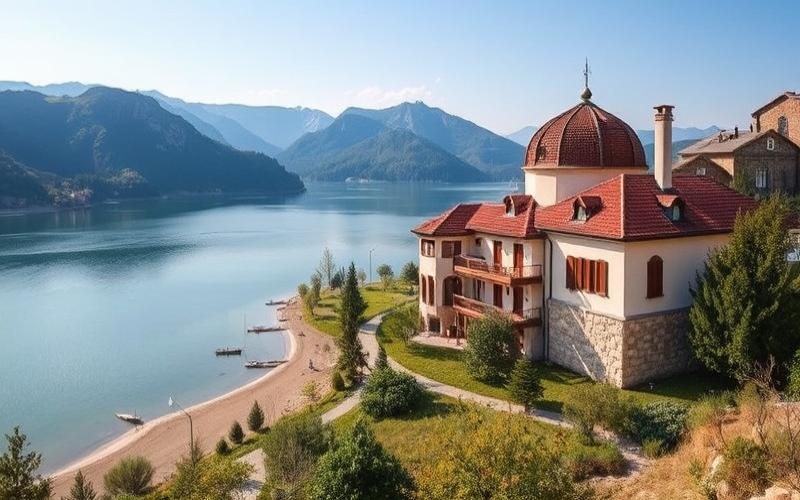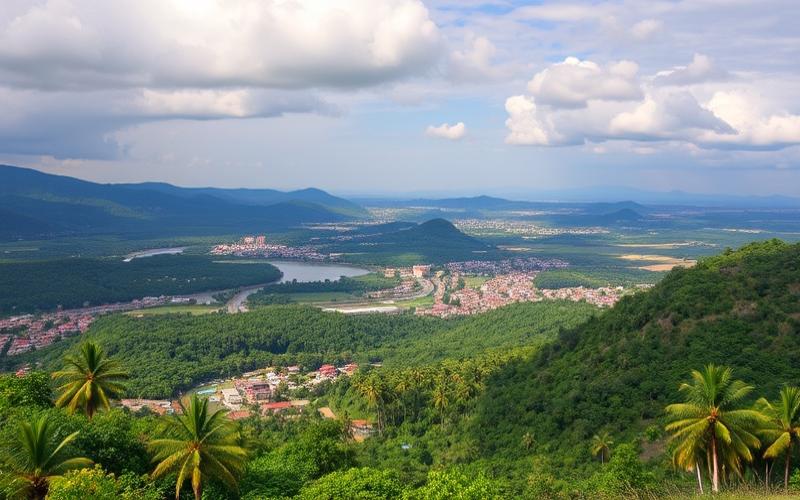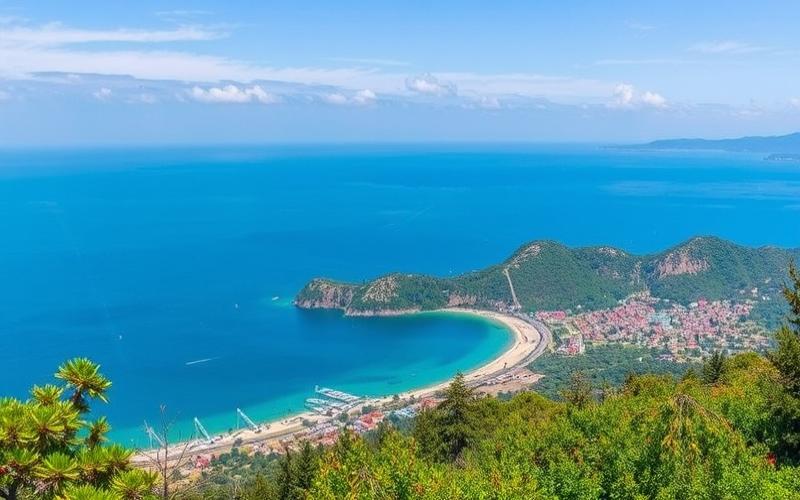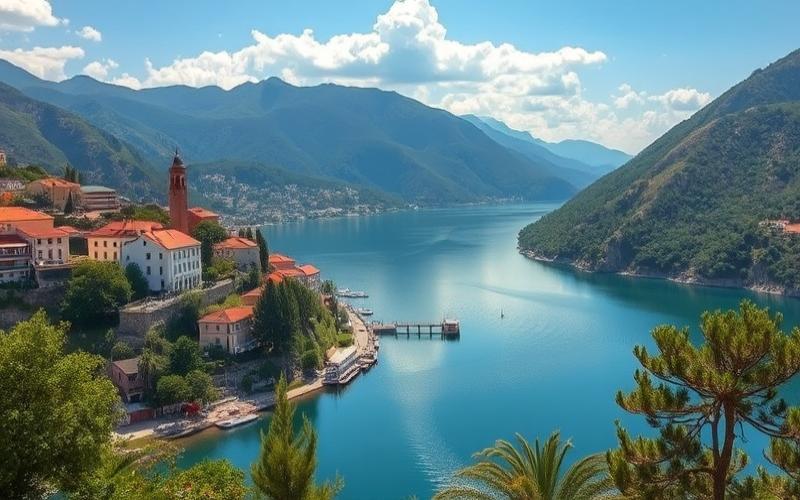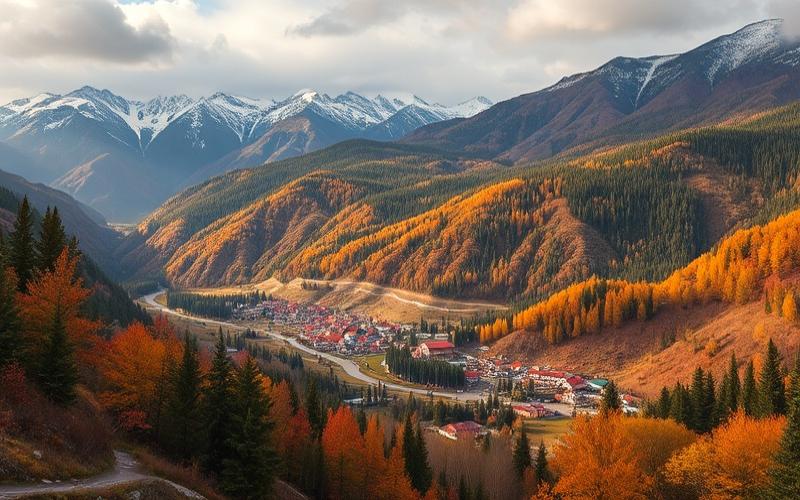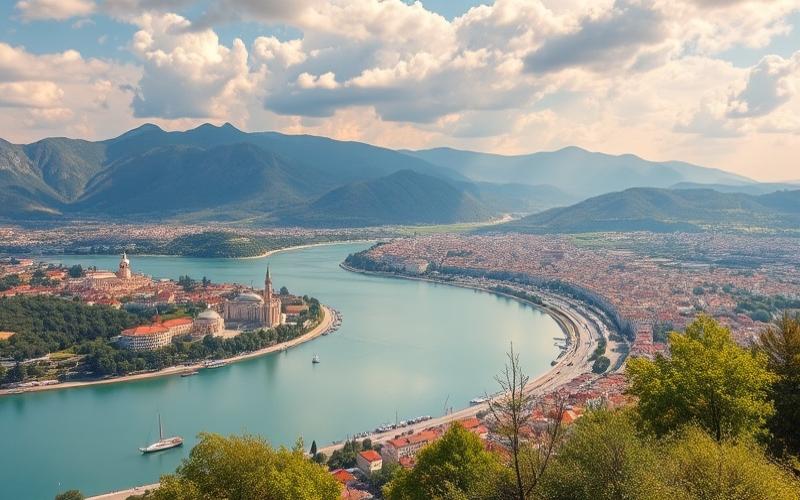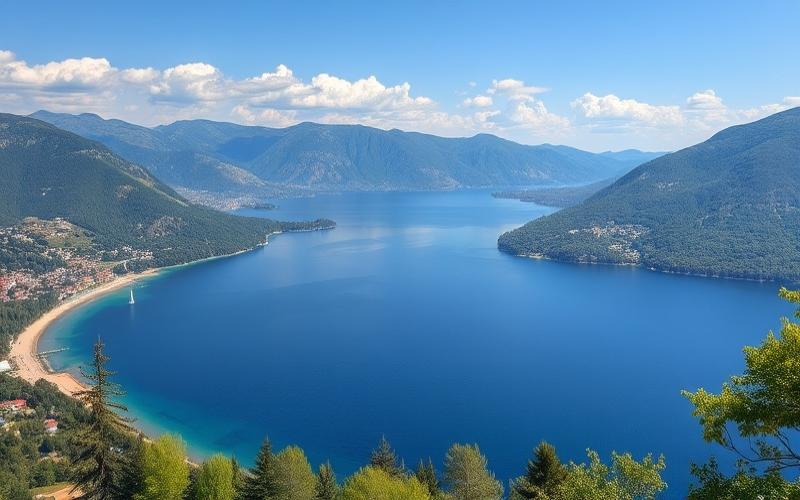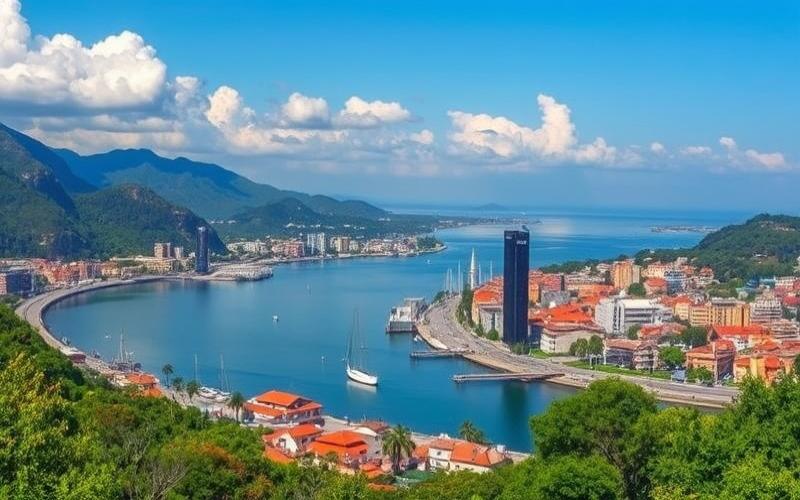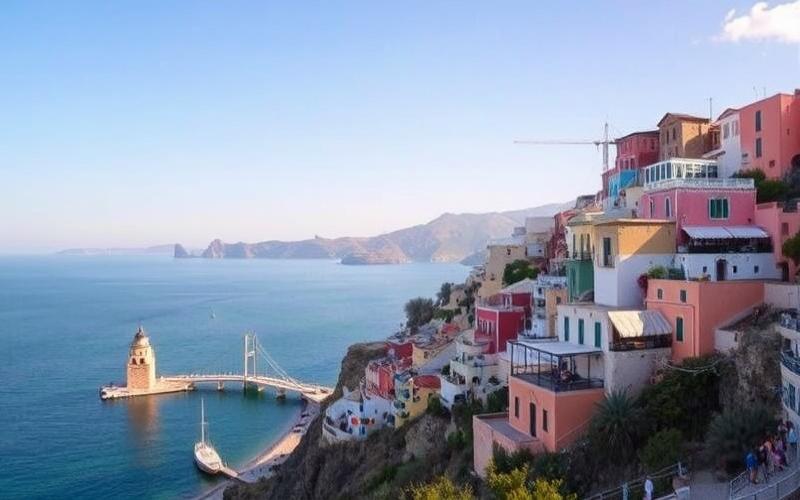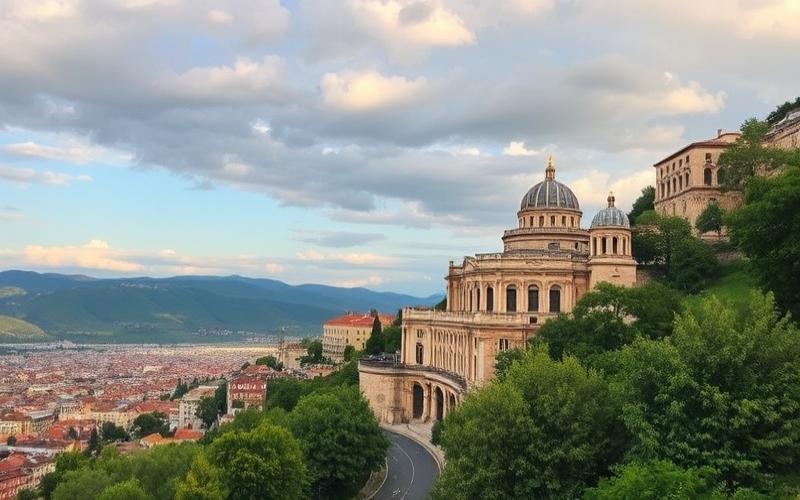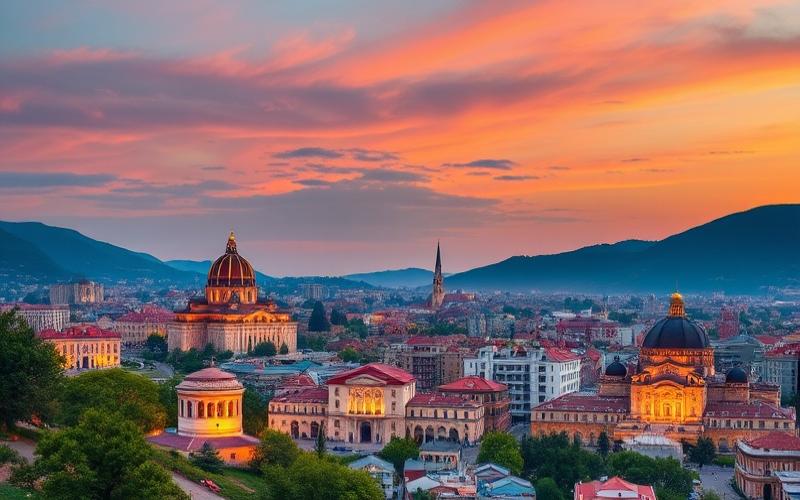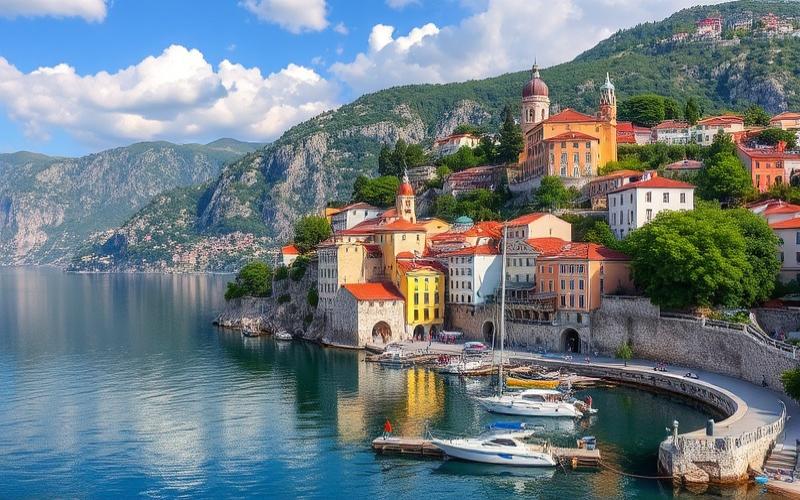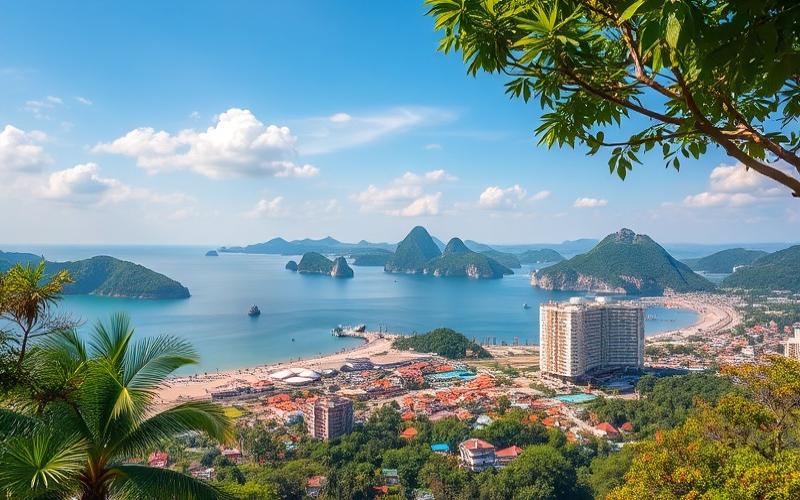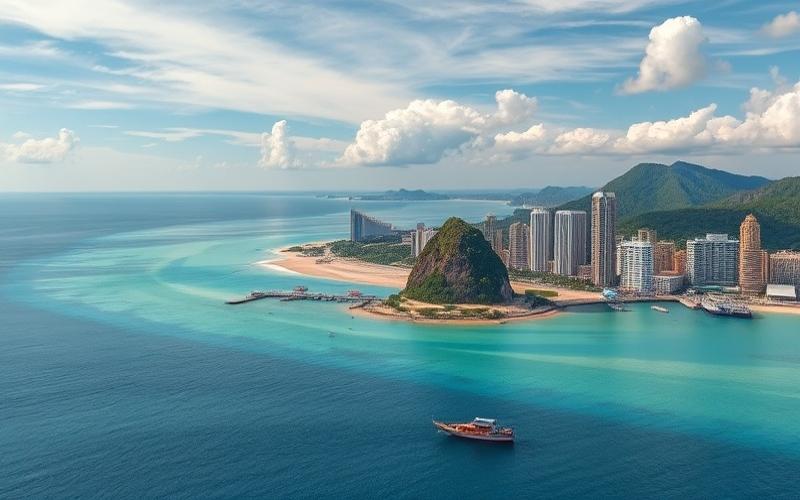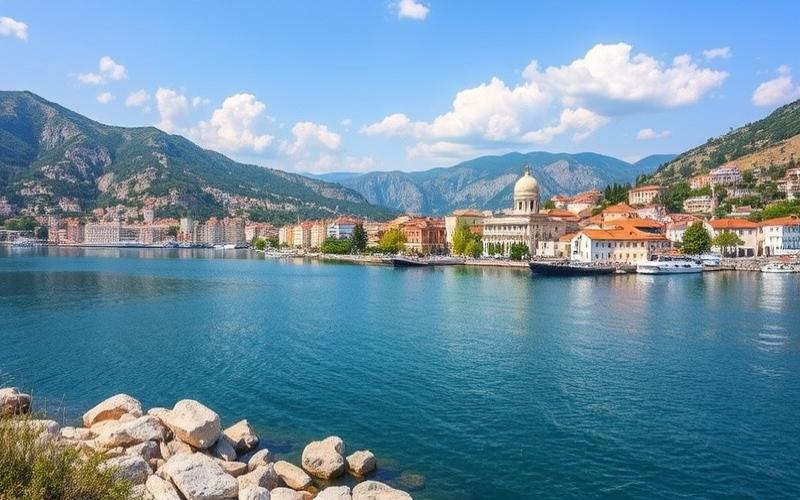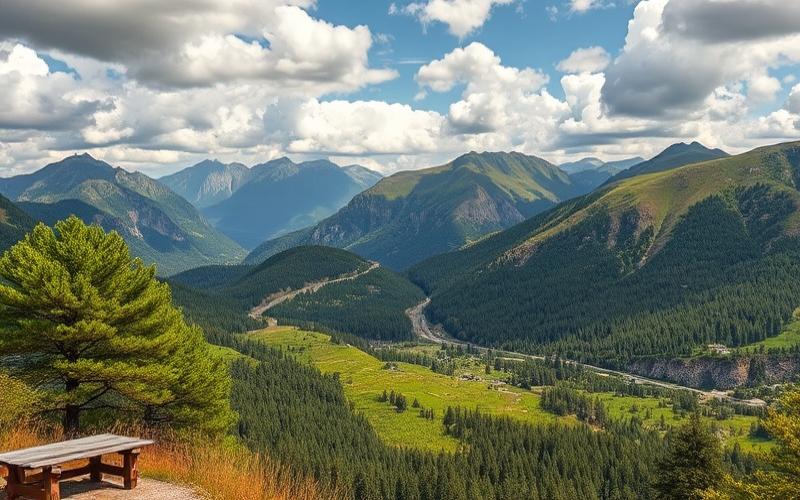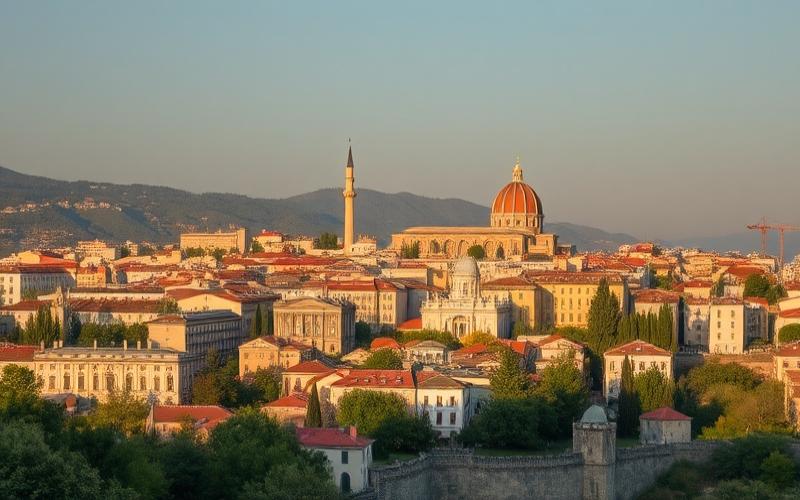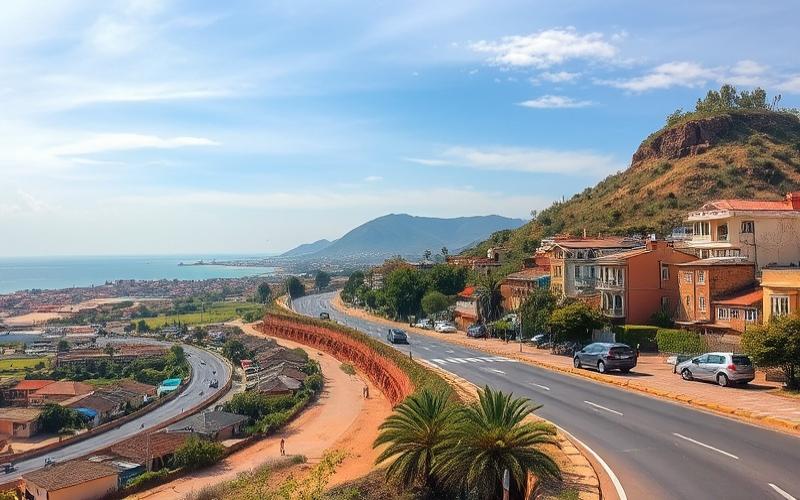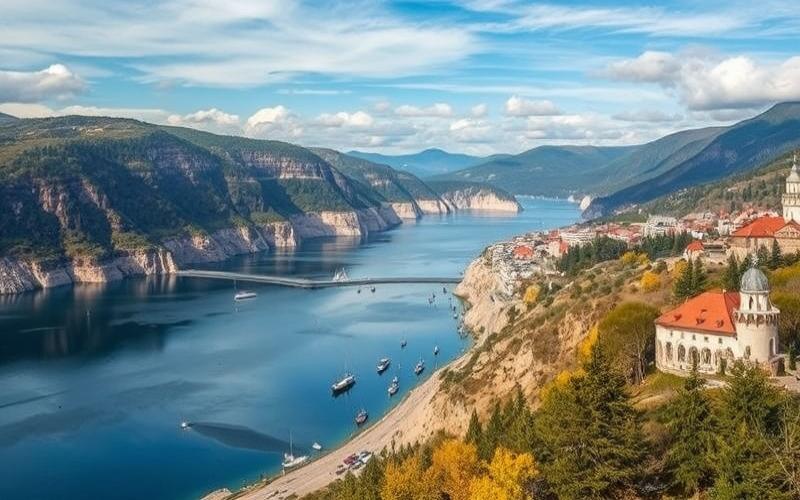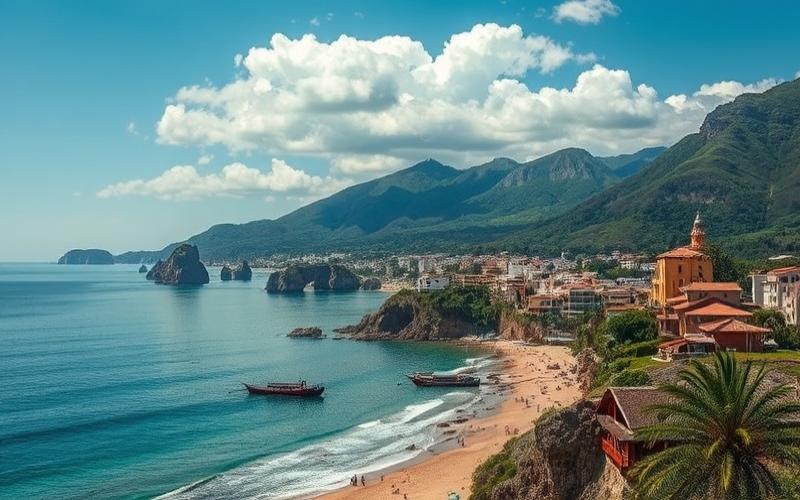
 Published on and written by Cyril Jarnias
Published on and written by Cyril Jarnias
The rise of tourism in North Macedonia, with its picturesque landscapes and cultural richness, is leading to significant changes in the local real estate market. As more and more visitors discover its charms, the growing demand for property purchases and rentals is pushing prices on an upward trajectory.
This dynamic not only influences real estate transactions but also raises questions about the balance between tourist development and protection of local resources. Investors and residents must navigate a changing landscape, where tourism plays a central role in the country’s economic and social transformation.
Tourist Buzz and Real Estate Boom in North Macedonia
The rise of tourism in North Macedonia in recent years has had a direct impact on the real estate market, particularly in major tourist cities like Skopje and Ohrid.
In May 2025, the country welcomed 130,739 tourists, of which 77.6% were foreign visitors. Over the January-May 2025 period, overall tourist numbers increased by 16.3% compared to last year, with a 23.6% growth in foreign tourists.
This record influx translates into growing demand for temporary and permanent accommodation in sought-after areas:
| City | Real Estate Demand Trend | Key Drivers |
|---|---|---|
| Skopje | Strong Increase | Economic/cultural capital; business and leisure tourism |
| Ohrid | Very Strong Increase | UNESCO heritage; lakeside/cultural tourism |
- In Skopje: Urban rehabilitation (e.g., Skopje 2014 project) has enhanced appeal for local and foreign real estate investors.
- In Ohrid: The UNESCO city status attracts both international and domestic buyers looking for second homes or seasonal rental properties.
Preferred types of investments include:
- Short-term rental properties (apartments or houses), especially via digital platforms.
- Second homes, sought by both expatriates and Macedonian urbanites for personal use or seasonal rental.
- Small family hotels and guesthouses adapted to international tourism.
Investors are attracted by attractive returns linked to:
- The continuous increase in overnight stays (+12% between January-May 2024/2025).
- A diverse clientele (Turkey, Germany, France…).
However, this growth comes with several challenges:
List of main issues:
- Pressure on local housing stock: increased difficulty for some local residents to access property in high-demand tourist areas.
- Rapid price increases sometimes leading to speculation detrimental to the local community.
- Strain on urban infrastructure (road networks/water/sanitation), requiring accelerated adaptation.
The Macedonian government is heavily investing in modernizing urban and tourist infrastructure: renovation of the two main international airports (Skopje/Ohrid), urban beautification, and creation of cultural/museum spaces.
Regulatory measures are also emerging to:
- Regulate the short-term rental supply,
- Promote access to primary housing for residents,
- Ensure balanced development between tourist appeal and local quality of life.
This context makes the Macedonian real estate market a dynamic yet complex sector where remarkable opportunities for investors—mainly around seasonal rentals—coexist with the need for vigilance regarding local social balances.
Good to Know:
The tourist influx in North Macedonia has seen notable growth, reaching about 1.2 million visitors in 2022, with peaks in key cities like Skopje and Ohrid. This buzz contributes to a real estate boom, pushing property prices upward, especially for rental properties and second homes favored by foreign investors. In response, the government has introduced regulations to balance supply and demand while promoting sustainable urban development. However, this growth comes with challenges such as a shortage of affordable housing and increased pressure on infrastructure, highlighting the need for careful management to maintain residential accessibility.
The Tourist Gems Redefining the Real Estate Landscape
Major Tourist Sites in North Macedonia Influencing the Real Estate Market:
- Lake Ohrid
A UNESCO World Heritage site, Lake Ohrid attracts a growing number of visitors each year thanks to its spectacular landscapes, beaches, and rich historical heritage. Key attractions include the Church of Saint John at Kaneo, the Ancient Theatre of Ohrid, and Samuil’s Fortress. This tourist enthusiasm has led to a notable increase in real estate prices in the region, particularly around the lake and in Ohrid itself. Demand is strong for second homes, renovated traditional houses, and modern apartments with lake views. - Skopje
A dynamic capital combining Ottoman heritage and modern post-earthquake architecture, Skopje benefits from a tourism boom centered on iconic places like Macedonia Square, the historic Stone Bridge, and museums (Skopje City Museum). Tourism development here is accompanied by a urban transformation marked by the construction or renovation of hotels, tourist residences, and also housing intended for short-term rental investment. - Bitola
The country’s second city in cultural importance after Skopje and the southern gateway to the Greek Balkans, Bitola charms with its imposing cathedral, lively festivals, and historical remains. The growing influx of tourists has stimulated the improvement of hotel infrastructure and enhanced the appeal of restored old properties into guesthouses or rental apartments.
| City/Site | Major Tourist Assets | Effect on Real Estate |
|---|---|---|
| Lake Ohrid | UNESCO heritage; beaches; churches | Price increases; strong demand for second homes/seasonal rentals |
| Skopje | Lively capital; museums; monuments | Increased new construction; short-term rentals in demand |
| Bitola | Cultural festivals; historic center | Renovation of old buildings for tourism |
Evolution of Sought-After Property Types:
- Traditional houses converted into tourist accommodations
- Modern apartments with privileged views (especially near the lake)
- Long-term rental investments aimed at expatriates/international workers
- Second homes adapted for seasonal stays
Local Economic Consequences:
The tourism boom directly stimulates the real estate sector through a widespread increase in land transactions in these attractive areas. This also promotes job creation related to construction/renovation as well as the tertiary sector (hospitality), while generally energizing the concerned local economies.
Main Effects:
- Rapid land valuation
- Urban architectural diversification
- Potential pressure on access to permanent local housing due to increased foreign demand
Good to Know:
Lake Ohrid, a UNESCO World Heritage site, is a true economic catalyst for North Macedonia, attracting many tourists and boosting surrounding real estate prices. This increased demand influences the types of properties in demand, ranging from vacation homes to long-term real estate investments. Meanwhile, Skopje and Bitola are undergoing rapid transformation with improved infrastructure, resulting in a proliferation of new constructions for both tourism and residential purposes. The tourist influx creates a dynamic where the increase in visitors stimulates the local economy and favors the diversification of the real estate market, making these regions attractive to investors seeking promising returns on investment.
The Impact of Tourist Flows on Soaring Real Estate Prices
The marked increase in tourist flows in North Macedonia has had a direct influence on real estate prices, particularly in high-tourist-attraction areas like Skopje and Ohrid.
| City/Region | Average Price per m² (2025) | Real Estate Dynamics | Rental Yield |
| Skopje | €1,500–2,000 | Strong demand, new projects | 5–7% |
| Ohrid | Up to €2,000+ | Dynamic seasonal rental | Up to 8% |
| Bitola | ~€900 | Still affordable market | Variable |
- In Skopje, the capital and economic hub, demand is sustained by the arrival of new residents, rapid urban development, and infrastructure modernization. The Aerodrom, Karpoš, and Centar neighborhoods are particularly sought after.
- In Ohrid, a UNESCO city on the shores of its namesake lake, the surge in seasonal rentals linked to tourist influx has caused prices to soar; yields sometimes exceed those observed in Skopje.
- In cities like Bitola, although the market remains more affordable (~€900/m²), an initial appreciation is observed thanks to growing cultural tourism.
Tourism growth is attested by a double-digit increase in the number of foreign visitors in 2024–2025. Turkish tourists represent up to 42% of foreign arrivals. Other dynamic markets include Serbia (+20 to +30%, especially towards Skopje/Ohrid), Germany, and France.
The main economic and social factors explaining this surge:
- Increased demand for properties intended for short-term rentals (Airbnb, hotels).
- Attraction to natural/cultural heritage (Lake Ohrid UNESCO site).
- Foreign investments attracted by high yields and a price per m² lower than major European capitals.
- Urban modernization (transport, commerce).
In less frequented or rural areas:
Prices remain stable or even moderate, due to insufficient tourist flow to stimulate the local real estate market. These areas attract neither investors nor developers.
For local residents:
The rapid price increase creates a risk of residential exclusion in some tourist neighborhoods where access to housing becomes difficult for the local population.
For foreign investors:
The situation still offers strong potential: high rental yield in some cities; but beware of risks related to a local real estate bubble or future stricter regulation.
Observed government policies:
- Indirect support via urban/hotel renovation projects.
- Relative absence of restrictive measures on foreign investment or short-term rentals – which currently amplifies the upward trend.
Key takeaway:
The spectacular rise in international tourism selectively boosts the Macedonian real estate market in its attractive hubs, thus widening a growing gap with peripheral regions and raising questions about local social sustainability.
Good to Know:
In North Macedonia, the surge in real estate prices in tourist areas such as Ohrid and Skopje has been exacerbated by the growing influx of visitors, with a nearly 12% increase in property prices over the last two years in regions favored by tourists. This enthusiasm is partly due to increased interest from foreign investors, attracted by rental potential, but it also translates into pressure on the purchasing power of local residents who struggle to keep up with these increases. In less frequented regions, like Bitola, the impact remains limited, highlighting a marked contrast. Government policies aimed at regulating the real estate market and promoting affordable housing remain insufficient in the face of these dynamics, although some double taxation plans have been implemented to curb speculative acquisitions. This phenomenon calls for a balance between tourism development and residential sustainability to preserve property access for inhabitants.
The Rise of Rental Investments in Macedonian Lands
Rental investments in North Macedonia are experiencing remarkable growth, fueled by a combination of economic, political, and social factors.
Main Reasons for Increased Investor Interest:
- Stable economic growth and favorable prospects for the coming years.
- Attractive purchase prices, notably in Skopje where the square meter ranges between €1,500 and €2,000, well below many European capitals.
- High rental yields, oscillating between 5% and 7% in the capital, with peaks reaching up to 8% in some tourist regions.
- Sustained rental demand, due to the continuous arrival of new residents, university students, and foreign workers.
Recent Tourism Trends:
North Macedonia benefits from growing tourist appeal around UNESCO sites like Ohrid.
The number of international visitors increases each year, which stimulates demand for seasonal rentals (furnished apartments, second homes).
Occupancy rates during the summer high season are particularly high in Ohrid.
“Ohrid attracts mainly for its exceptional tourism potential: a city listed as a UNESCO World Heritage site thanks to its lake and historic center. Rental yields there are variable but can reach 8% or more on properties intended for tourists.”
Most Sought-After Regions for Real Estate Investment:
| Region | Main Assets | Average Purchase Price (€/m²) | Gross Yield |
|---|---|---|---|
| Skopje | Dynamic capital, strong residential & office demand | 1,500–2,000 | 5–7% |
| Ohrid | Major tourist site (lake & UNESCO heritage) | Variable | Up to 8%+ |
| Bitola | Cultural tourism & university students | Affordable | Growing potential |
In these areas:
- In Skopje, the market is driven by rapid urban development and a relative shortage of supply facing growing demand (rents starting around €200 up to sometimes over €600 depending on standard).
- In Ohrid, it is international tourism that strongly boosts short-term rentals.
- Bitola attracts with its heritage projects linked to cultural tourism as well as a loyal student clientele.
Factors That Have Favored This Growth:
- Modernization of urban infrastructure
- Increased political stability over several years
- Relatively advantageous tax policies for foreign real estate investors
- Rapid urbanization creating a supply/demand imbalance
“The strong demand for apartments to rent keeps prices at a high level. They do not expect a decrease in rents. Even in the capital, demand far exceeds supply.”
Impact on Real Estate Prices & Local Communities:
The sector’s dynamism has led to an average annual increase of over +5%, with some central neighborhoods showing nearly +6%. This trend exerts notable pressure on local purchasing power—especially among young professionals or students—while some property owners fully profit from the tourism-related boom.
Potential Challenges Encountered:
List of main challenges:
- Progressive saturation in some highly demanded urban areas (notably Skopje center)
- Increased speculative risk if supply eventually significantly exceeds real demand
- Possible government regulations aiming either for temporary rent caps or more declarative/fiscal obligations to avoid a real estate bubble or protect local populations
Comparative Table – Recent Evolution:
| Year | Average Price per m² (Skopje) | Annual Variation (%) |
|---|---|---|
| Mid‑2024 | ~€1,783 –1,867 | +5–6% |
Economic projections anticipate maintenance or even a slight progression as long as the international tourist flow persists and a stable political climate encourages foreign direct investments.
The concurrent rise of the Macedonian rental real estate market is explained as much by its solid economic fundamentals as by its growing capacity to attract both tourists and international investors. However, it is now necessary for local and foreign actors to fully integrate future regulatory risks as well as potential tensions with some communities impacted by this rapid transformation.
Good to Know:
The real estate market in North Macedonia, boosted by the rise in tourism, is attracting more and more investors, both local and foreign. The increase in the number of tourists, which jumped by 10% in 2022, has led to strong rental demand, particularly in the urban centers of Skopje and Ohrid, prized for their cultural heritage. This attractiveness is supported by government incentive policies and relative economic stability, making these regions particularly favorable for investments. However, this expansion has caused a notable rise in real estate prices, putting pressure on local communities who sometimes regret the rapid transformation of their environment. Challenges such as market saturation and limiting local regulations are also emerging, prompting investors to carefully evaluate regions. Economic projections suggest continued growth but call for caution regarding an oversupply of rental properties, otherwise the risk of imbalance in terms of equity for residents could increase.
Disclaimer: The information provided on this website is for informational purposes only and does not constitute financial, legal, or professional advice. We encourage you to consult qualified experts before making any investment, real estate, or expatriation decisions. Although we strive to maintain up-to-date and accurate information, we do not guarantee the completeness, accuracy, or timeliness of the proposed content. As investment and expatriation involve risks, we disclaim any liability for potential losses or damages arising from the use of this site. Your use of this site confirms your acceptance of these terms and your understanding of the associated risks.

